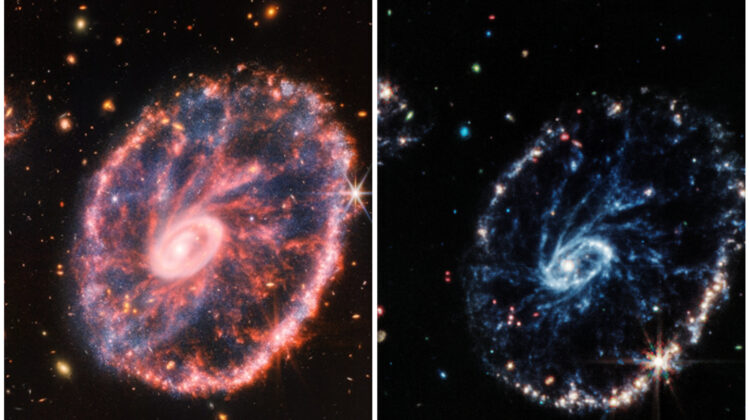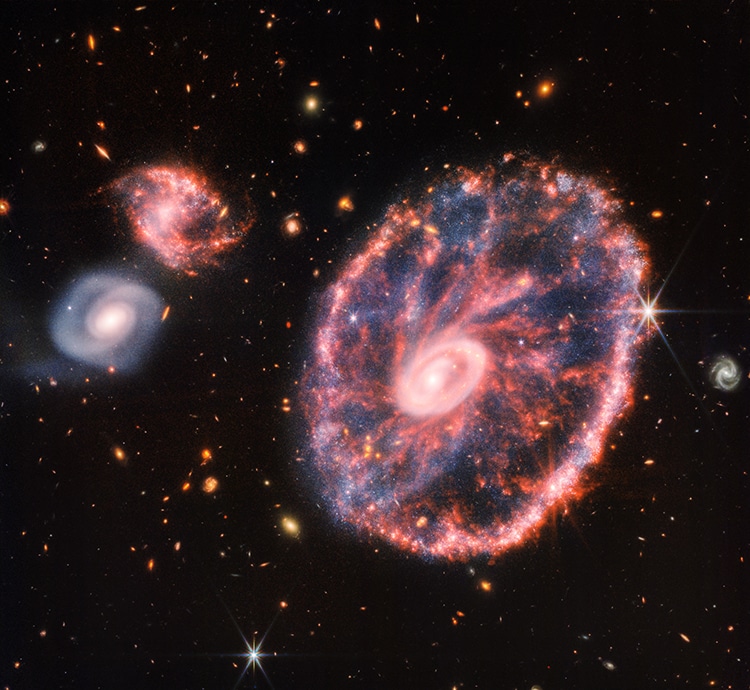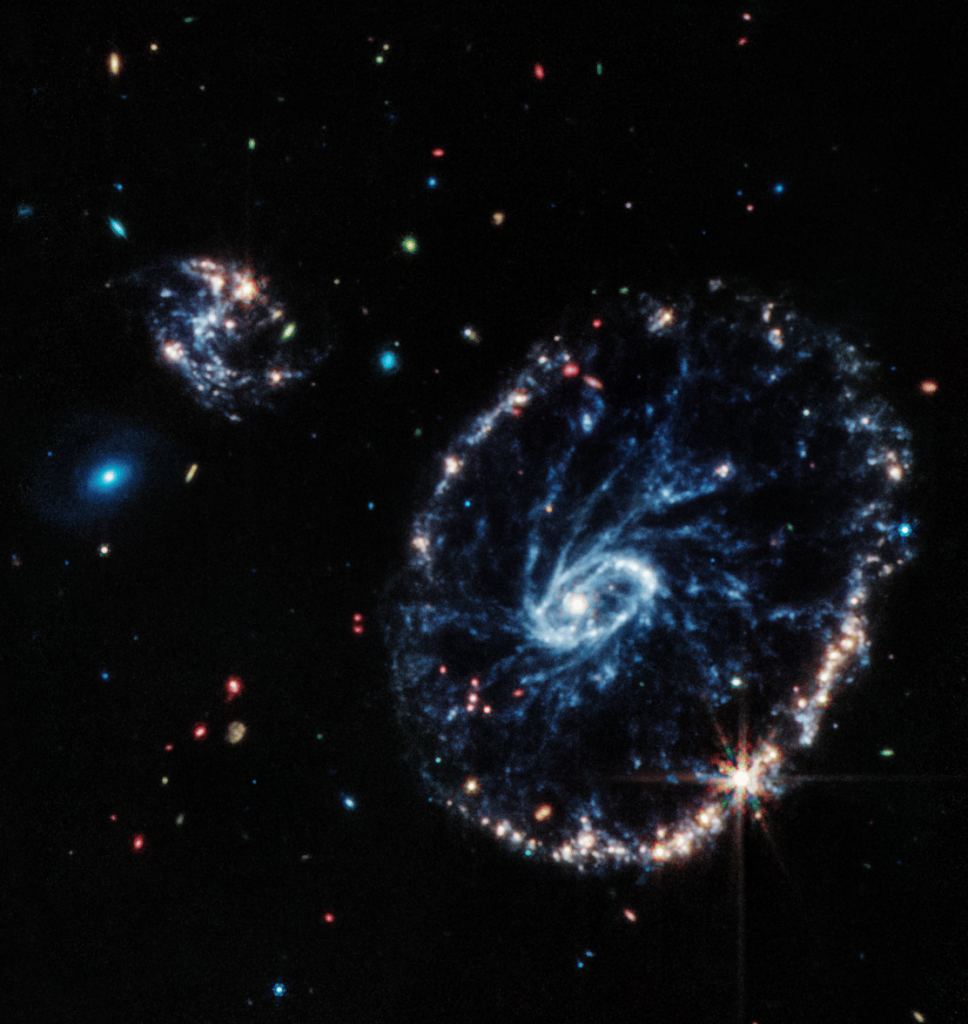
NASA’s James Webb Space Telescope is making scientific advances by the light-year. It has now turned its superb lenses towards the Cartwheel Galaxy, a strange and beautiful element of our universe, from its lofty perch in space. NASA’s images reveal strangely shaped rings of stars and supernovas that were previously obscured by floating clouds of dust. The telescope’s unique camera technology has enabled this significant advancement.

After less than a year in space, the telescope has already sent stunning images of a variety of space phenomena to Earth, including the oldest galaxy ever discovered, images tracking Jupiter’s movements, and images of other distant reaches of the universe. The telescope’s infrared cameras have been working nonstop to produce stunning images that can detect light that is not visible to the naked eye or previous telescopes.
The Cartwheel Galaxy is a 500-million-light-year-away phenomenon in the Sculptor constellation. The collision of a large spiral galaxy and a smaller galaxy formed its distinctive shape. Two concentric rings are expanding, the smaller of which is made up of bright young stars and the larger of which is made up of stars in formation and supernovas. Previously, dust in the center of the rings made observing the galaxy more difficult.
The NIRCam and MIRI imaging systems were used to capture the new images of the Cartwheel Galaxy. The NIRCam detects light in the near-infrared range of 0.6 to 5 microns. This aids in cutting through some of the dust that obscures visible light. The blue dots are stars or stars that are forming. The MIRI instrument detects mid-infrared light. Its data is highlighted in red in the composite image below. “It reveals regions within the Cartwheel Galaxy rich in hydrocarbons and other chemical compounds, as well as silicate dust, similar to much of the dust on Earth,” NASA says. These regions form a network of spiraling spokes that serve as the galaxy’s skeleton.”
While these images are better than ever, they are only a beautiful snapshot of a constantly evolving and expanding galaxy that remains a fascinating sight.
The James Webb Space Telescope of NASA has focused its attention on the Cartwheel Galaxy, a strange and beautiful feature of our universe.
h/t: [Gizmodo]


Leave a Reply